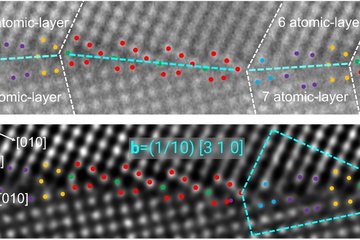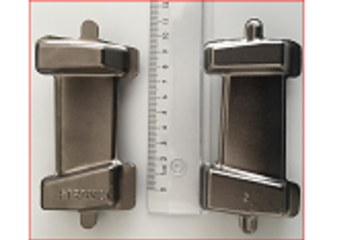All genres
1121.
Talk
Ab Initio Thermodynamics: Status, applications and challenges. The second Sino-German Symposium on “Computational Thermodynamics and Kinetics and Their Applications to Solidification”, Kornelimünster/Aachen, Germany (2009)
1122.
Talk
Fully ab initio supercell corrections for charged defects. CECAM workshop "Which Electronic Structure Method for the Study of Defects?", Lausanne, Switzerland (2009)
1123.
Talk
First principles determination of phase transitions in magnetic shape memory alloys. 2nd Sino-German Symposium on Computational Thermodynamics and Kinetics and their Application to Solidification, Aachen, Germany (2009)
1124.
Talk
Computing free energy contributions of point defects. ECAM conference: Which Electronic Structure Method for the Study of Defects?, Lausanne, Switzerland (2009)
1125.
Talk
Materials Design Based On Ab Initio Thermodynamics And Kinetics: Present Status And Perspectives. Colloquium at Universität Gießen, Gießen, Germany (2009)
1126.
Talk
Modern Methods of Multiscale Modeling. Colloquium at TU Darmstadt to celebrate 20 years of Materials Science Faculty at the TU Darmstadt, Darmstadt, Germany (2009)
1127.
Talk
Role of Atomistic Simulations in the Prediction of Thermodynamic Properties of Materials. Workshop on Multi-Scale Computational Materials Design of Structural Materials, POSCO international center, Pohang, South Korea (2009)
1128.
Talk
The accuracy of first principles methods in predicting thermodynamic properties of metals. Asia Steel 2009, Busan, South Korea (2009)
1129.
Talk
A multiscale study of the Hydrogen enhanced local plasticity (HELP) mechanism. Asia Steel Conference 2009, Busan, South Korea (2009)
1130.
Talk
First Principles Predictions of Stacking Fault Properties in FeMn Alloys. Asia Steel Conference 2009, Busan, South Korea (2009)
1131.
Talk
Multi-Scale Computational Materials Design of Structural Materials: First-Principles Calculations. Workshop at Pohang University of Science and Technology, Pohang, South Korea (2009)
1132.
Talk
Ab initio based multiscale modeling of engineering materials: From a predictive thermodynamic description to tailored mechanical properties. Asia Steel Conference, Busan, South Korea (2009)
1133.
Talk
Ab Initio Based Multiscale Modeling of Engineering Materials: From a Predictive Thermodynamic Description to Tailored Mechanical Properties. Colloquium at TU Bergakademie Freiberg, Freiberg, Germany (2009)
1134.
Talk
Challenge and opportunities for the European Steel Industry. Asia Steel Conference, Busan, South Korea (2009)
1135.
Talk
Wasserstoff in X-IP Stahl (ab initio) Einfluss von Defekten auf die Energetik und Dynamik von Wasserstoff in Manganstählen. X-IP Workshop, Dortmund, Germany (2009)
1136.
Talk
What can EPR hyperfine parameters tell about the Si dangling bond? - A theoretical viewpoint. 1st International Workshop on the Staebler-Wronski effect, Berlin, Germany (2009)
1137.
Talk
Multi-scale modeling of the phase stability of interstitial Fe-C solid solutions. Invited talk at MPI for Metal Research, Stuttgart, Germany (2009)
1138.
Talk
Universal trends for the solubility of hydrogen in non-magnetic 3d transition metals derived from first principles. DPG Spring meeting, Dresden, Germany (2009)
1139.
Talk
Ab initio up to the melting point: Anharmonicity and vacancies in aluminum. DPG Früjahrstagung, Dresden, Germany (2009)
1140.
Talk
First principles determination of phase transitions in magnetic shape memory alloys. DPG Spring Meeting 2009, Dresden, Germany (2009)











